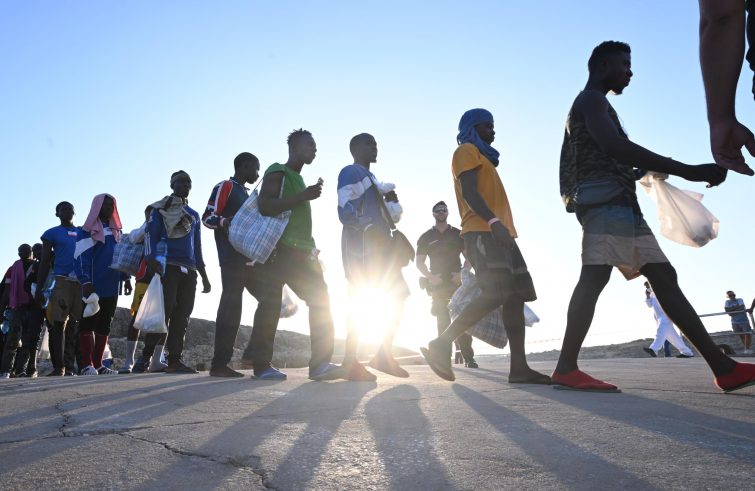
The thunderous rhetoric about stopping the flow of refugees arriving in Italy by sea at all costs is based on two widespread assumptions: firstly, that this is an exceptional phenomenon involving huge inflows and, secondly, that there are no de facto alternatives to containing it by resorting to drastic measures, possibly even in violation of human rights. Both assumptions are unfounded.
Let us first look at the numbers.
It may come as a surprise to some, but
The number of immigrants in Italy has been stable for a dozen years,
at around 5.3 million registered residents, plus an estimated 4-500,000 undocumented residents. Inflows have never risen again since the 2008 economic crisis.
In addition, most residents are women, almost half of them are Europeans, and Christianity in its various denominations, notably Orthodox, is the majority religion.
By the end of 2022, there were 340,000 refugees and asylum seekers, 40% of whom were Ukrainian refugees. Now they are likely to be around 400,000: less than a tenth of the total, with a high proportion of Ukrainian refugees. The EU as a whole took in less than 10% of the world’s refugees, apart from the Ukrainians.
Arrivals by sea are a highly visible and dramatic event, but they are not an unprecedented one. In fact, they have been taking place for about 30 years, with some ups and downs, and Lampedusa was even awarded a gold medal for civil valour in the 1990s for its efforts in receiving refugees. Between 2015 and 2017, the number of arrivals by sea remained fairly stable at over 150,000 per year.
Moreover, other EU countries take in many more refugees than does Italy, including those who transit through Italian territory. In 2022, Italy received only 77,000 asylum applications out of 965,000 in the EU as a whole, or about 8% of the total; Germany received more than 200,000, France and Spain more than 100,000.
The emergency therefore lies in our anxiety and fear, in our inability to create a well-organised reception system capable of rapidly emptying the port of Lampedusa and redistributing the immigrants received.
The response to refugees arriving from the southern Mediterranean is in stark contrast to the generous reception of Ukrainian refugees: 4 million in Europe, about 170,000 in Italy.
Alternatives to the current chaotic reception system should be pursued.
The first is the inclusion of eligible refugees in the category of workers, with appropriate training: this would solve both the problem of companies in search of workers and the problem of refugees in search of a dignified life.
The second solution is to strengthen other entry mechanisms such as resettlement, private or community sponsorship, humanitarian corridors. All these options have already been put into practice and continue to be effective at the international level, albeit with limited numbers. They consist of organising, on the basis of a list of priorities, the transfer of people currently living in precarious conditions in refugee camps in the South of the world to other countries willing to receive them. This can and must be done first and foremost by national governments (an average of 100,000 resettlements a year worldwide), but voluntary organisations, religious communities, local authorities and businesses could also play their part. And hopefully partnerships between public and private actors. Over the years, a total of 300,000 people has been welcomed into Canada under these arrangements, including 40,000 Syrian refugees in recent years.
The humanitarian corridors organised by the Catholic and Protestant Churches have given hospitality to 5,000 people in Italy and Europe: a small but promising seed.
It is a question of making it grow, in the face of the megaphones denouncing an emergency that is not in numbers but in our political and spiritual attitudes.
(*) Professor of Sociology of Immigration (University of Milan)












